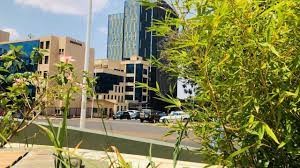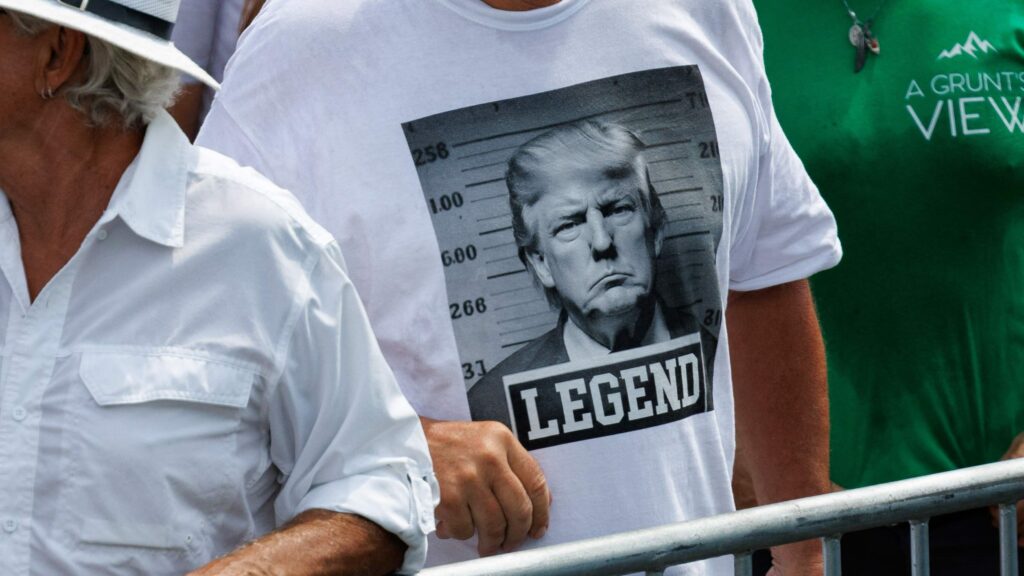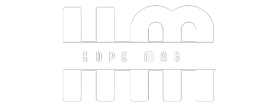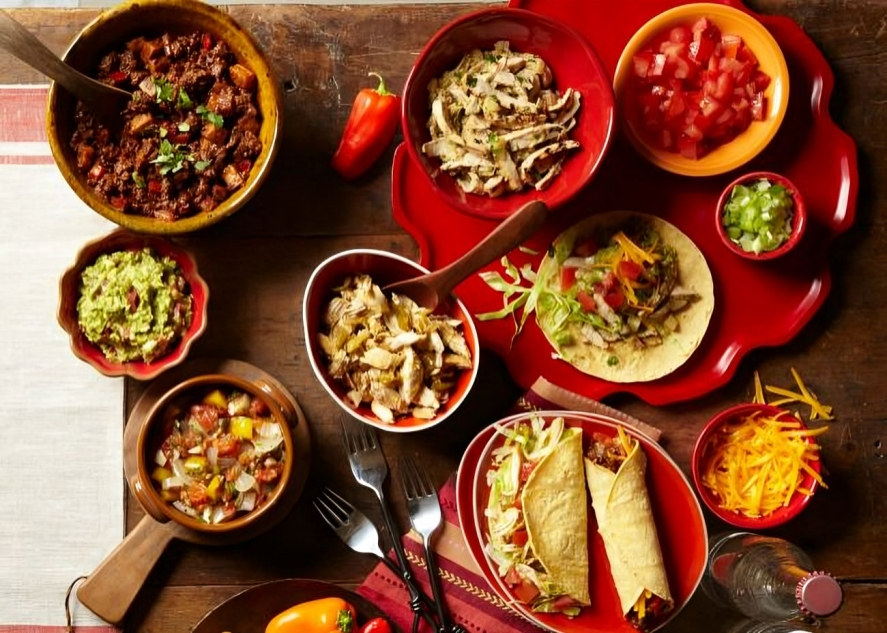Business
Boosting Rwandan Exports, Bolstering Rwandan Trade

TradeMark East Africa (TMEA) is a multi donor funded agency supporting trade and regional integration in the East African Community (EAC). It has a network of offices across all EAC member states and an additional office in South Sudan. Here in Rwanda, TMEA interventions cover six core areas, all of which focus on facilitating trade and the integration of Rwanda into the EAC.
One of these six pillars of interventions is focused on export development and trade facilitation through the strengthening of trade-related logistics . Since 2011, TMEA has partnered with the Ministry of Trade and Industry (MINICOM) and the Rwanda Development Board (RDB) to promote Rwandan exports and trade within the EAC and with the rest of the world. “A new growth area of TMEA’s work is to support firm level competitiveness.
This is particularly important for land locked countries like Rwanda where there is a growing trade deficit and a need to boost exports. This challenge is reflected in the nature of the transport system. Containers arrive from Mombasa full of imported goods but go back half empty”, says Mark Priestley TMEA Rwanda Country Director.
This section presents a number of interventions implemented by MINICOM and RDB with support from TMEA that are aimed at improving Rwanda’s production competitiveness.
From Landlocked to Land Linked – setting up a Trade Logistics Hub
Rwanda is in the nexus between the East African Community (EAC) and the Democratic Republic of Congo (DRC). The North and Central corridors meet in Rwanda. Rwanda is at the hub; the geographical centroid of the region. Exploiting this location is what is going to put Rwanda on the map: make it land linked rather than land locked. The DRC and EAC have been Rwanda’s fastest growing export destinations over the past decade outside of Rwanda’s traditional exports sector (tea, coffee, minerals) destinations. Growth in exports to the DRC and EAC between 2002 and 2010 averaged 50% and 34% respectively. Export trends have shifted. No longer are the bulk of exports going to Europe.
The EAC is the new buyer of much that Rwanda exports, along with brand new markets such as Congo Brazzaville and Gabon. Meeting these new needs demands new infrastructure to make exporting logistically viable. This shift is timely and embedded in Rwanda’s 2020 Vision.New infrastructure includes air cargo links, to meet the growing market for high value commodities such as flowers and fresh fruit. To efficiently export this type of goods in a timely manner needs a streamlined flow from field to freight to foreign market. Building this new infrastructure involves physical development, such as the special economic zone (SEZ) developing near the airport, cold storage facilities and runway expansion.
It also involves manpower development to create experts in fields such as cargo handling and freight forwarding. Of course in addition to those skills, there is the soft skill training needed to create a tight, efficient team of experts. Improving air freight is only a small part of this initiative. On land there are a number of possibilities currently being considered. Product aggregation through logistics centres for example: A central point where transport assembles and goods combine. Trucks and planes leave full, goods leave on time and both traders and buyers leave smiling. Further afield, a Foreign Based Multi Service Centre would relay real-time details of needs and supplies to all players electronically, enabling traders to connect to buyers and transporters to connect with goods.
Off dock containers in Mombasa and Dar es Salaam would streamline Rwanda’s connection to the sea by creating an area purely for Rwanda’s imports and exports.
Back at home, bonded warehouses at key border points such as Ruzizi, Rubavu and Bugesera District would centralise goods passing through Rwanda, further strengthening our position as a focal point for trade; effectively a dry port.
In an attempt to develop all the above opportunities, MINICOM and TMEA have created an ambitious programme to facilitate the Government’s National Export Strategy of increasing export to $2 billion per year by 2017.
One of the most important interventions under this programme is the setting up of a Trade and Logistics Hub , which is visualised essentially as a “distri-park” (a cargo distribution complex that provides logistics facilities), providing logistics services at a scaled-up level for both import and export cargo originating and terminating in the extended region. This could possibly be located near the Kigali SEZ which will allow the platform to service the concentrated requirement of industries in that area. Another possible location is near the Kagitumba border which would allow the platform to cater to traffic of both Central and Northern corridor. The third possible location could be near the proposed Bugesara airport. In January 2013, TMEA hired Deloitte India and Kenya as a transaction team to run the project feasibility studies and market assessments, which includes assessing the demand for cargo and projecting 20 -30 years down the road.
This first phase is nearing completion, concluding 5 months of assessing feasibility of sites, engaging stakeholders and assessing markets.Phase 2, concentrating on Public Private Partnership (PPP), is due to start next month and run through to December 2013, in which market sounders will be used to gauge investor appetite, with the aim of having a list of committed investors by 2014 ‘These are heavy, capital intensive projects…which have to be driven by the private sector.’ Says Leonard Mungarulire, SPIU Coordinator at MINICOM; an understatement when an estimated $80-100 million is marked for mobilisation. It is paramount to the success of everything MINICOM and TMEA hope to achieve that the private sector is in the driving seat. This amount of capital may seem an exorbitant expense but to be in line with Economic Development and Poverty Reduction Strategy II (EDPRS II) targets, Rwanda needs to achieve at least 11.5% average Growth Domestic Product (GDP) per annum, and reduce poverty to below 30%. The most effective way for this to become a reality is through the attraction of Foreign Direct Investments (FDI). This has been confirmed by the recent International Growth Centre (IGC) report “Understanding Rwanda’s Export Sector”.
RDB and TMEA have been actively supporting this crucial aspect of FDI attraction in a number of ways. RDB hired Karisimbi Partners, a local consulting firm, to identify several markets that may be of interest to foreign investors. Following on from this study RDB launched a number of initiatives, from their Construction Materials Outreach Strategy, to the attraction of investors in roofing, pharmaceuticals and shoes.
These projects are in varying stages of development, with proposals now being prepared for the Government of Rwanda to address constraints to sector attractiveness.
The need to develop foreign investment is a pressing one for a number of reasons. The creation of non-agricultural jobs is key to the development of the job market in the future. In 2011, Rwanda’s formal private sector employed a mere 4% of the country’s labour force, and only 0.5% of firms had more than 30 employees. Rwanda’s limited space and burgeoning population dictates a need for at least 200,000 off farm jobs to be created in order to meet future demand. A large portion of those jobs can be created through businesses developed by foreign investors.
So while the vision is that Rwanda will become a trade hub that neighbouring countries will pivot around, so too with the FDI strategy become the lynch pin on which hinges all that MINICOM, RDB and TMEA intend to do.
Recapturing the Domestic Market
In a large supermarket chain here in Kigali, there are around 25,000 products on the shelves. Of these products only around 1,000 originate from Rwanda. It should be possible to shift this balance to supply more products from the domestic market. ‘We are ready to support the market. We came here to support local people.’ says their Manager. Rwandans like to buy their own products and in some cases the product is cheaper than the imported version. Around 20 local suppliers approach the supermarket every month with products to sell. Currently, few of these will ever hit the shelves. This is largely due to quality standards: without suitable packaging, barcodes or a certificate from the Rwanda Bureau of Standards (RBS), the product is not saleable.
This situation reflects the findings of a recent RDB/TMEA research programme called Rwanda Supplier Development and Backwards Linkages Programme, which started a few weeks ago and is aimed at recapturing the domestic market.
Several large companies were approached for details on their specific needs when importing products. Their needs are specific and their quality standards are very high. They understand that their customers expect a high level of care and they aim to meet that expectation. This is the challenge for the Rwandan market,who may be less familiar with these types of needs. Domestic suppliers were then identified who had the potential to meet these needs, including building materials, uniforms, paper products, sugar and bottle caps.
At this stage, 5 buying companies and 4 supplying companies have been identified.
The major aim of this project is therefore to increase the growth ambition of our companies and help them to overcome some hurdles. Energy, for example, is expensive here and not always reliable. Access to land and to affordable loans can also be a challenge. With the right input for the right companies, these barriers are surmountable. The project, a collaboration between RDB and TMEA, aims to address these barriers and find ways to overcome them. What this project does not aim to do is limit imports; rather to improve the capacity of internal companies to compete on the domestic market. ‘The potential is there.’ Says Eusebe Muhikira, Ag. Head of Trade and Manufacturing at RDB. ‘We can meet the need for high quality if there is demand.’ This is key if this project to be successful. Not only does the Rwandan market need to be developed, the buyers have to be willing. Both sides are being explored in order to identify these demands as accurately as possible. For this to be of interest to investors, a willing market needs to be apparent. ‘The mind-set is changing,’ continues Eusebe Muhikira, ‘If you are not, you will disappear.’ The government is championing this change in mind-set with very proactive objectives. For example they intend that by 2017, 100% of rice consumed in Rwanda will be supplied by the domestic market.
For this to be feasible, they are investing in irrigation on a large scale.
This proactivity is further reflected in the attitudes of many of the small companies approached. Once they understand the need, there is a thirst for knowledge. Putting this knowledge into practical terms however is more difficult, as they negotiate financial and logistical barriers. ‘Rwanda does not have many natural resources, but it’s got hope.
Every Rwandan feels that tomorrow will be better than today. That’s the biggest natural resource of this company.’ Says Carter Crockett, Partner at Karisimbi Partners who conducted early research. There is certainly hope, even when facing large barriers. Take a paper products company, for example, who was recently forced to relocate. They were obliged to find new land and build a new factory. In this move they decided to partner with a Kenyan firm. As RDB were approaching them with ideas for moving into the bottle labelling market, their doors had opened and their capacity had expanded.
Fortuitous timing means there is a real chance that this company
may supply labels to the domestic market on a large scale in the future. Once standards and quality levels can be met and maintained, the domestic market becomes a viable market to recapture. Genuinely competitive companies can then begin to enter foreign markets, achieving RDB and TMEA’s aim of increasing their turnover by $6million by 2016.
The Whole Package – Getting Rwandan Companies Ready to Export
Rwanda’s ambitious drive to grow export to a level of USD 2 billion per year in 2017 has been designed by RDB and MINICOM and recently approved by the Industrial Development and Export Commission (IDEC).In response to this, an export development pilot project called Market Linked was carried out: one of the other initiatives that RDB and TMEA are implementing together.. In this pilot, 10 Rwandan companies were prepared and introduced to buyers in Uganda to gauge our neighbour’s interest in Rwanda’s products. Introductions were facilitated by Traidlinks (an Irish funded NGO based in Kampala).
This is the opening chapter in a projected chain of activities that aims to forge new opportunities for Rwandan companies currently only competing on the domestic market. MINICOM data from 2010 shows that only 29 companies exported over 1 billion RWF ($1.6 million) of which 13 were in ‘manufacturing’ mainly coffee and tea. In total during 2010 there were only 175 active exporters with an average export turnover of 149 million RWF. A large portion of these exports were to the Democratic Republic of Congo (DRC) and Burundi. Their markets are comparatively smaller and less competitive than Rwanda’s other neighbours.
“Imports don’t make us rich! We have to look at new products and new markets,” says Kaliza Karuretwa, Former Director General of Trade at MINICOM . “We need to diversify. We need to look beyond traditional markets. And most of all, we need to think differently.”
This was the main lesson learnt during the pilot: the need to think differently for the more sophisticated market conditions in Uganda. To enter the market, a different standard of packaging, marketing and promotion needs to be recognised and met. Some products didn’t have barcodes for example. Another area that needs development is the pricing and payment systems involved in selling to a foreign market. Most large suppliers will pay within 100 days, and prefer to pay electronically. For small companies used to dealing in immediate cash, this creates chronic cash flow issues.“It was a learning experience,” says TMEA-funded Market Linkages adviser to RDB Andrew Thorburn. “A whole range of issues have to be addressed from putting on the bar codes to packaging, pricing and delivery. But it was encouraging. Feedback from Uganda shows very strong demand – we just need to get the marketing issues right”. Generally, the pilot companies recognised the need for these changes and made huge efforts to appeal to the competitive Ugandan market. ‘There was so much enthusiasm.’ Says Diane Sayinzoga, the Trade Development Division Manager at RDB. Sosoma, a major porridge company changed its paper packaging to a more robust biodegradable plastic on the advice of a Ugandan buyer. ‘…and there is such potential there.’ She continues. Inyange realised during this pilot that working with small traders was not the most efficient way to serve the market and are now in discussion with a larger Ugandan distributor.
In fact to be a genuine player in this more competitive market, the entire package, not just the packaging, has to change; from the quality of the product to the creation of a barcode system. The pilot in Uganda was a valuable educational tool to gain a deeper understanding of what exporting to this new market would entail. These lessons then formed the basis for decisions made by RDB and TMEA when designing a more comprehensive Export Development Programme expected to start in a few weeks. Their design consists of three elements. The first being to begin to fill the skills gap by training local consultants to understand the market and advise companies. The training will be partly at a Kigali institution in the form of formal academia, and partly by shadowing foreign experts. The second element of this is for the students and foreign consultants to provide technical assistance in preparing companies for an export market. They will help develop an export plan based on the demands of the market that will ease these companies into this new platform by making them as market ready as possible..
Lastly there will be a Market Linkage Programme based on the model of the pilot Market Linked project in Uganda which will enable the consultants and companies to accurately identify and connect with potential Burundian buyers this time. They will then go on a targeted sales mission to Bujumbura to forge new links and establish new trade. The aim for the consultants would be to develop export capacity so that they become paid consultants, actively working to enable trade and potentially able to train more local consultants in the future. The long term objective for TMEA is to roll out this Market Linkage Programme to Kenya and Tanzania using the same approach as in Uganda, Rwanda and Burundi.
‘‘We are seeing a good trend.’ Says Eusebe Muhikira, Ag. Head of Trade and Manufacturing at RDB.
‘This has wide implications for many people. We’ll see the impact as things take off, and the potential impact is huge. By establishing higher standards and a better understanding of consumer needs, companies can become market ready on the domestic market, the regional market and eventually even the global market.
RDB is the coordinator and implementer of this ambitious plan that involves multiple stakeholders exploiting sector export plans and removing both cross-cutting and sector related constraints. Expected results by 2016 include 25% increase in intra-regional exports when compared to total exports in the region. It is due to commence in July 2013 and reach completion in July 2015.
Crossing Borders, Creating Bridges
The World Bank Doing Business Report 2013 shows that Rwanda ranks low regionally and globally on trade competitiveness. For example, in trading across borders index of the report Rwanda is ranked at 158th amongst a list of 185 countries.
TMEA, through its long term technical assistance to the Ministry of Trade and Industry (MINICOM), has been supporting the Government of Rwanda develop a comprehensive national strategy to promote cross-border exports. The National Cross-Border Trade Strategy finalised in November last year aims to address the root causes of this low ranking and identify a number of ways to improve cross border trade (CBT), which is aligned with MINICOM’s Trade Policy Mission of “growing sustainable and diversified products and services for trading locally, regionally, and internationally, with the aim of creating jobs, increasing incomes, and raising the living standards of Rwandans.”
To develop this Strategy, MINICOM and TMEA hired a team of researchers to journey out to Rwanda’s edges to capture the reality on the ground by seeing who and what crosses the borders. Rwanda’s CBT is mostly to the Democratic Republic of Congo (DRC) and to some extent with Burundi; both formally and informally, so the researchers began on these borders. Official trade data from both the formal and informal sector indicates that informal exports to neighbouring countries in 2011 were 51% higher than formal exports. Informal trade should not be confused with illegal trade. Simply, it’s the movement of goods in such small quantities that they go un-registered. It’s the lady with a basket of tomatoes, the man in rubber boots wheeling a bicycle laden with matoke. Informal cross-border trade (ICBT) has important implications for poverty reduction as over 80% of ICBT takes place in Rwanda’s Western Province, where there is a high percentage of poverty.
The researchers spoke to traders on both sides of the DRC/Rwanda border who benefitted from CBT. Conflict in the DRC Kivus has meant that there is high demand for both the goods that are imported from Rwanda and re-imports such as petrol and electronic goods. This demand means that prices of goods in Gisenyi are higher than Kigali; reflecting the high prices in Goma. This in itself is an indication of just how big this demand is.
Imports include a wheat company created for the Rwandan market but who export $30-40 million a year to the DRC market to meet their needs.
“Several challenges such as non-tariff barriers, compositeness and supply side constraints still hamper the region’s fragile trade scenario” says Mark Priestley, TMEA Rwanda Country Director. Yet, Rwandan borders are comparatively more efficient than its neighbours. There is no charge on exports and increasingly there are already measures in place to support, condense and facilitate cross border trade. It’s the act of condensing that is the key to success: a more streamlined border process, a more concentrated flow of trade equals a more profitable outcome – a reduction in costs and an increase in profit equals less wastage of time, money and energy for more reward. Take the construction materials industry for example. To import a water tank from a neighbouring country means a truck carrying mostly air, wrapped in a thin skin of polyethylene.
Condensing this down to a truck of plastic pellets means fewer trucks, less fuel and less tax. Once in Rwanda, the pellets can be processed, melted and inflated into tanks. There are fewer opportunities in the DRC and Burundi for this type of consolidation which is yet another reason to increase trade to meet the needs of an already burgeoning market. With Rwanda’s good quality roads and infrastructure, it is entirely possible to order a product and have it delivered from Kigali to Goma in a matter of hours. Small quantities can be moved fast, which is a triumph of logistics, organisation, governance and manpower.
Another critical aspect of CBT, beside trade in goods, is trade in services which is one the numerous opportunities that the Government of Rwanda and TMEA are currently looking at. The researchers also covered this key area and spoke to traders who were trading their skills and services. Take the dentist they met in Gisenyi for example. His surgery perches on the Petite Barriere and, until quite recently his clientele were from both sides of the border. Now, increased security problems and instability in the region have led to a rapid decline in his Congolese clientele. He braved the border and set up a second clinic on the other side to continue catering to his client’s needs. Security challenges and an early border closure means that his working day has become shorter and more risky. He now has to cross back to Rwanda with his takings in cash.
It became clear to the research team that the skills and services market also needs support to develop. Change in policy could potentially help service providers such as this dentist by creating a cross border money transfer system, for example, to alleviate the dangers of travelling with cash. Following this realisation, the research team are connecting with people who already trade their skill or service across our borders and feasibility studies are underway to look at supporting trade in areas such as banking, accounting, finance and Information and Communication Technology (ICT) as well as exporting skills such as medicine, education and architecture. More simply, they realised that by encouraging local businesses such as banks, forex bureaus, and transport companies to synchronise their operating hours with border opening times, this would allow CBT traders to trade more efficiently. “This initiative will open the door to businesses which have innovative projects but have so far been unable to finance them due to the inherent risk involved,” said Rwanda’s Minister of Trade and Industry, Francois Kanimba. It is these inherent risks that MINICOM and TMEA are working to anticipate as they identify the next area for trade and the potential risks and barriers, then working to remove them before they become an issue. Obviously some issues are beyond their control: reducing instability in the DRC for example, but many regulatory constraints can be condensed or altered to better facilitate trade flow. ‘You can essentially kill a sector with the wrong set of regulations.’ Says Armin Lalui, one of TMEA-funded advisers to MINICOM External Trade Department. This may sound extreme but in essence, for a country with such proactive goals to increase trade, the effects of restrictions can be critical. Once the feasibility study phase is complete, the future programme is expected to see trade with Rwanda’s regional neighbours more than double over the next five years from an estimated US$9 million in 2011 to US$200,000 million by 2017.
Conclusion
These projects are only a selection of the wide range of innovative initiatives that MINICOM, RDB and TMEA are currently implementing to promote exports, stimulate trade and overcome the trade challenges that Rwanda and the region face. While the scope of these interventions is wide and their impact potentially huge, there are some unifying themes coming through. The need for higher consumer needs to be met, the need for greater support for traders and the overall need for increased attraction of foreign investment.
TMEA and their partners are focussing on these key priorities with their Trade Policy and Capacity Development Adviser, the continued work to attract foreign investment and their support to Rwandan small and medium enterprises (SMEs) as they penetrate the EAC market.
These priorities are all aimed at meeting TMEA’s ambitious targets by 2016, which includes a 10% increase in the total value of exports from the EAC region and a 15% reduction in the average time to import or export a container from Mombasa or Dar es Salaam to Burundi and Rwanda.
MINICOM, RDB and TMEA’s diligent work is being underpinned by the growing support of foreign investors, the proactive attitude of the Government and most of all, by the people of Rwanda. As understanding of consumer needs grows, more traders are willing to actively participate in becoming more competitive and therefore more confident. Once Rwanda is more confident in the EAC marketplace, it will also become more comfortably integrated into the EAC as they work together to create a more streamlined, organised and profitable trading community.
-

 News10 months ago
News10 months agoTrump Mug Shot: Exploring the Controversy, Legal Aspects, and FAQs
-

 Tech9 months ago
Tech9 months agoGuide to Nextdoorstudios: Your Ultimate Resource
-

 Tech4 months ago
Tech4 months agoShine Bright with the Twice Lightstick
-

 Health4 months ago
Health4 months agoThe Health Benefits of Indica Edibles: More Than Just a High
-

 Health5 months ago
Health5 months agoThe Best Hybrid Marijuana Strains for a Balanced and Customizable High
-

 Home and Garden10 months ago
Home and Garden10 months agoExploring the World of Spelling Bee Forums: Your Ultimate Guide
-

 Entertainment9 months ago
Entertainment9 months agoIzanami Backwards: Unveiling the Mysteries
-

 Fashion6 months ago
Fashion6 months agoThe Timeless Comfort- Exploring the Essentials of Tracksuit
















